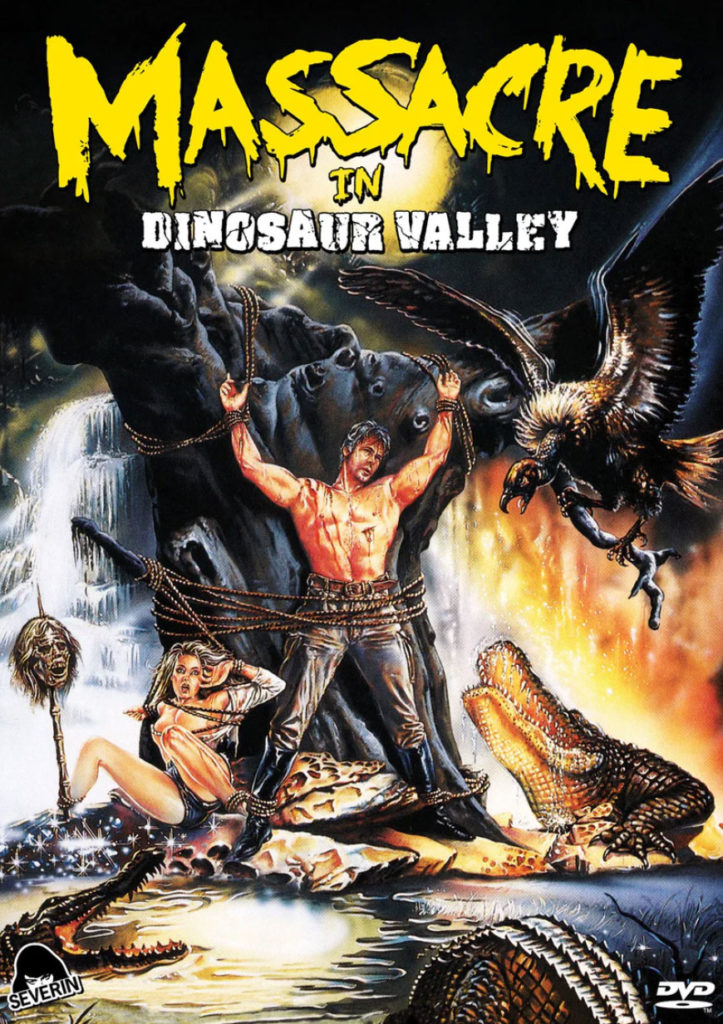 There are good Italian cannibal horror flicks, and there are bad Italian cannibal horror flicks. Besides the plot elements they all share and steal from one another, the other thing they have in common is that they are prime exploitation cinema. Massacre in Dinosaur Valley is one of the more exploitative of the bunch, and it has nothing to do with animal slaughter and mutilation, or graphic depictions of bodily injury. This flick is about the nudity. It’s right there in the Italian title of the movie.
There are good Italian cannibal horror flicks, and there are bad Italian cannibal horror flicks. Besides the plot elements they all share and steal from one another, the other thing they have in common is that they are prime exploitation cinema. Massacre in Dinosaur Valley is one of the more exploitative of the bunch, and it has nothing to do with animal slaughter and mutilation, or graphic depictions of bodily injury. This flick is about the nudity. It’s right there in the Italian title of the movie.
“Nudo e selvaggio” translates into English as, “Naked and wild.” The English-language distributors must not have thought much about that title, which would probably have frightened off more than a few theater owners back when it was released, so they titled the film Massacre in Dinosaur Valley. It’s just as descriptive and accurate as the Italian title. There is a massacre, and it happens in some place called Dinosaur Valley, but I have to admit that, going into this film blind, I was disappointed that there weren’t any dinosaurs. Meanwhile, had the film just been called Naked and Wild, my expectations would have been satiated. Anyway…
From 1985, Massacre in Dinosaur Valley is a joint Italian/Brazilian production, written and directed by Michele Massimo Tarantini, with some uncredited script work by prolific screenwriter Dardano Sacchetti. The film stars Michael Sopkiw as Kevin Hall, a mercenary paleontologist who roams all over South America in search of fossils. Continue reading “Massacre in Dinosaur Valley, aka Nudo e selvaggio”
